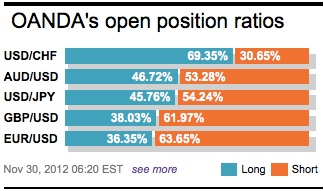The end of another week and month has global capital markets proceeding with caution this Friday, and especially so ahead of the German vote to approve the latest Greek ‘Band-Aid’ solution. The proposed Greek debt buy-back operation should also be considered another candidate for market concern. Early next week, the Euro-finance ministers propose to finalize Greek aid-affairs. The market expects further details of their debt buy-back operation to be published. This buy-back of government bonds is Greece’s latest attempt in cutting their debt burden. Their government is expected to pay between 30 to 35 cents on the EUR for their own issued product. No matter what, investors should expect the uncertainty around the percentage take-up of the reverse operation coupled with prospect of holdouts to complicate proceedings and eventually cause more Euro-market tension.
In Germany, the lower house passed the package of financial support for Greece by a strong majority of 473 out of 584 lawmakers. The SDP did not follow through on a threat to vote against the measures. The market considers this vote as one of many upcoming litmus tests of Chancellors Merkel’s authority ahead of German federal elections next year. For the next 10-months the German election will be sure to dominate Euro-zone news, similar to what the market experiences in North America, but unfortunately not with same drama intensity.

There are a plethora of economic indicators to digest. Obviously some are more important than others, while others only create more noise. The Eurocoin is one of the earliest measures of growth in the currency area and should be given its due respect. Data this morning released by the CEPR (Center for Economic Policy Research) and the Bank of Italy really showed nothing new. They confirmed that the Euro-zone economy shrank again this month, although the pace of contraction has steadied. The Eurocoin indicator was unchanged at -0.29%. This indicator estimates the quarter-over-quarter growth in GDP, excluding the most erratic of components like seasonal’s and short run activities. The measure is consistent with most other regional surveys of business activities.
It’s no real surprise to see the Euro-zone jobless rate rise to new record highs in October. The regions tougher austerity measures coupled with a deepening fiscal crisis are only worsening Euro-zone’s economic woes and by default employment is affected. The 17-member Euro-zone now has +11.7% unemployment, a tick higher than the Septembers print. This trend is expected to keep an upward trajectory well into next year, and maybe even beyond before any stabilization is noticeable. The OECD earlier this week projected that the Euro economy should expect to contract -0.4% and -0.1% this and next year. Member states economies have shrunk for two successive quarters and forcing companies to tighten their belts even further. With unemployment being a lagging indicator, the numbers can only be expected to get worse.
Canadian economic growth slowed to a 0.6% in Q3 as consumer spending gains were pared by the fastest export decline since the end of the last recession and falling business investment. The gain in GDP in Q3 was the slowest in 12-months. The decline may be significant enough to see the BoC undertake a dovish turn in rhetoric heading into the New Year. But, will the loonie follow? Improving US data could end up helping rather than hindering the CAD currency movement. South of the Canadian border, US consumer spending unexpectedly declined and incomes stagnated last month as Sandy kept many from getting to work or from shopping. Finally, this week will be closed out with US regional manufacturing surveys where investors anticipate a small rebound.

The EUR still has the green light to pass “go” or in other words, continue its next leg higher. The overall scope is for the bulls to see a print north of 1.31. Neither metrics nor fundamentals are being used as an excuse to impede the current single units momentum. Many short-term EUR longs have met their objectives intraday, however, so far there has been limited opportunity to establish new long positions. Investor bias remains building for gains towards the upper 1.30 echelons over the coming sessions. The 10 and 30-DMA point north, again adding further support to the upside potential. Expect the plethora of investors to be looking to buy the EUR on dips and this despite the pullbacks of late being rather limiting.

Other Links:
The EURO Loses its Shackles
This article is for general information purposes only. It is not investment advice or a solution to buy or sell securities. Opinions are the authors; not necessarily that of OANDA Corporation or any of its affiliates, subsidiaries, officers or directors. Leveraged trading is high risk and not suitable for all. You could lose all of your deposited funds.



